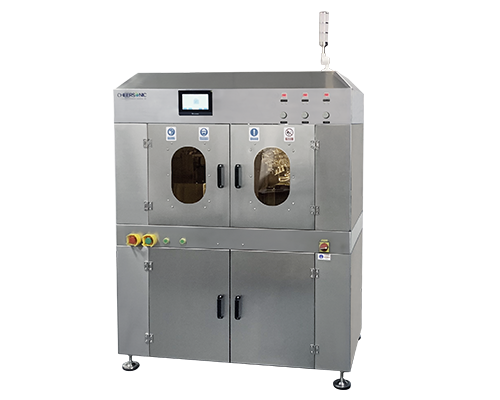Interventional Tool – Microcatheter
Microcatheter refers to a reinforced catheter with a very small diameter. There is no strict size definition, but in experience, small catheters with a diameter of 0.70-1.30 mm are often called microcatheters. Used for guidewire support/exchange, passing through lesions, delivering embolic agents, stents, etc.
The small structure makes it very suitable for “navigating and shuttling” within human blood vessels, so it is increasingly used in minimally invasive interventional surgeries.
Most microcatheters are designed with the following points in mind:
lubricating coating
Soft tip (or angled)
Middle reinforcement layer
Among them, the middle reinforcement layer will have a huge impact on the performance of the microcatheter in terms of design and manufacturing.
The middle reinforcement layer is a design method that uses metal wires to increase the strength and pushing force of the catheter by weaving or winding it. Among the many microcatheters, this braiding or winding method can be roughly divided into 4 categories:
braid
twine
Braiding + wrapping (tied)
Braiding over wrapping (multiple layers)
The selection of four methods represents the important performance requirements of microcatheters for different vascular lesions. For example, the design concept of braiding + winding has good proximal braiding and good distal winding flexibility. It is a very good choice for neurovascular transportation. For CTO lesions, high-hardness braiding can well help it penetrate calcification.
Among them, by adjusting the density and pitch of weaving or winding, its push and flexibility (bending resistance) can be changed accordingly.
The above seemingly simple selections and adjustments require a large amount of experimental practice during design and production to verify whether they meet clinical requirements. Then in the clinical feedback, reverse adjustments are made.
In addition, there is currently a process of cutting metal pipes to achieve braiding or winding properties. The underlying logic of this design is still a combination of push and flexibility, but instead of using wire, it uses pipe cutting. This application not only reflects the creativity of research and development, but also highlights the various possibilities in the design of microcatheters.
The outer layer of polymer material is also adapted to practical clinical uses, using a series of materials with different hardnesses to conduct mechanical transmission from near to far. This idea of hardness gradient actually coincides with the design of the middle layer.
It is the double combination of the middle layer + the outer layer that creates the excellent performance of the microcatheter “opening roads in mountains and building bridges in water”.
Of course, there is a point here, that is, what are the advantages and disadvantages between microcatheters and non-microcatheters (catheters with larger sizes)? In fact, the two are incomparable. They both have different clinical applications and function in the clinical scenarios where they can be applied.
For microcatheters, when the OD/ID is small, it is necessary to consider the combination of these design points and conduct research and development experiments based on different emergency needs (vascular scenarios).
With its small body, microcatheters have been used in coronary, peripheral, neurological and other fields, proving their value for interventional procedures. As medical materials science advances further, I believe that more and more advanced microcatheters with excellent performance will continue to come out and become an important weapon in the hands of doctors to eliminate diseases.
Ultrasonic spraying is particularly suitable for a variety of microcatheter coating applications due to its fine, non-clogging, repeatable spray performance and extremely low flow rate capabilities. For several years, Cheersonic has been providing ultrasonic spraying equipment to global medical equipment manufacturers. With the development of medical device technology, we will continue to design unique microcatheter coating ultrasonic spraying solutions and provide high-quality microcatheter coatings on the market.
About Cheersonic
Cheersonic is the leading developer and manufacturer of ultrasonic coating systems for applying precise, thin film coatings to protect, strengthen or smooth surfaces on parts and components for the microelectronics/electronics, alternative energy, medical and industrial markets, including specialized glass applications in construction and automotive.
Our coating solutions are environmentally-friendly, efficient and highly reliable, and enable dramatic reductions in overspray, savings in raw material, water and energy usage and provide improved process repeatability, transfer efficiency, high uniformity and reduced emissions.
Chinese Website: Cheersonic Provides Professional Coating Solutions


